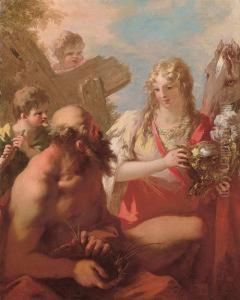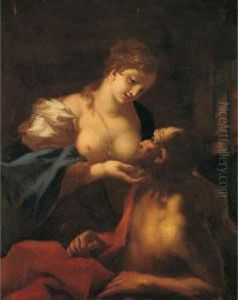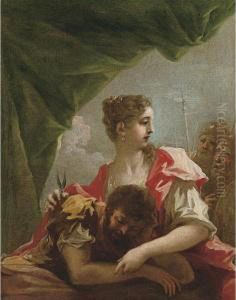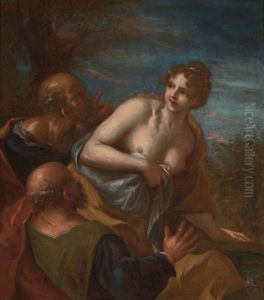Giannantonio Pellegrini Paintings
Giannantonio Pellegrini, born in 1675 in Venice, Italy, was a prolific Venetian painter of the late Baroque period. He is part of the rich tapestry of Venetian artistry that flourished during the 17th and 18th centuries, a period marked by a vibrant artistic renaissance in Venice. Pellegrini's work is often characterized by its dynamic compositions, vibrant use of color, and the dramatic expressiveness of his figures, elements that align him with the grand tradition of Baroque art. His contributions to the Venetian art scene are notable for their artistic merit and for the way they reflect the broader trends of his time.
Pellegrini's artistic journey was significantly influenced by his travels across Europe, which broadened his perspectives and enriched his palette. Notably, he spent time in England and the Republic of Ireland, where he undertook commissions that would cement his reputation as a master painter beyond the confines of his native Italy. His work in England, including decorative schemes for stately homes and public buildings, brought him into contact with the British aristocracy and helped to disseminate Venetian artistic styles outside Italy. This period was crucial for the cross-pollination of artistic ideas across Europe, and Pellegrini played a key role in this exchange.
Upon his return to Venice, Pellegrini continued to produce works that were celebrated for their originality and vibrancy. His ability to blend the traditional with the innovative made his work highly sought after, not just in Venice but across the European continent. He was a contemporary of other great Venetian painters such as Giovanni Battista Tiepolo, with whom he is often compared. Both artists were instrumental in defining the Rococo style that would come to dominate European art in the 18th century, though Pellegrini's work retains distinct characteristics that set it apart.
Giannantonio Pellegrini's legacy is that of a bridge between the Baroque and Rococo, embodying the transition in European art from the grandeur and drama of the former to the lightness and elegance of the latter. His death in 1741 marked the end of an era for Venetian painting, but his influence persisted, inspiring future generations of artists both in Italy and abroad. Today, Pellegrini's work is celebrated in major museums and collections worldwide, testament to his enduring impact on the history of art.



